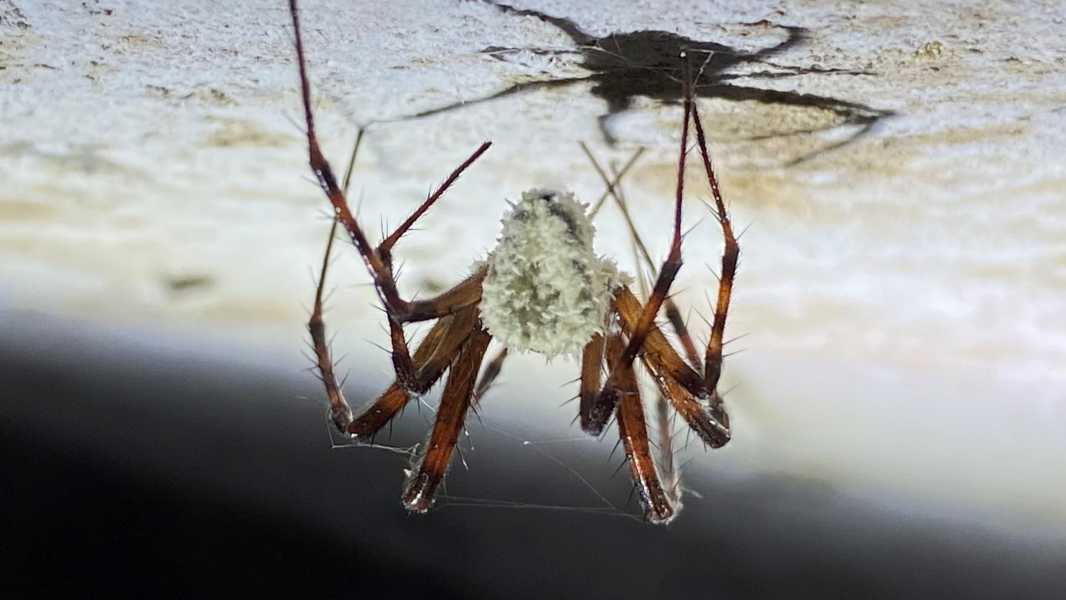
The zombie spider fungus (Gibellula attenboroughii) infects spiders while they are still alive. (Photo credit: Tim Fogg/CABI)
Researchers have identified a previously undescribed fungus that controls minds and creates 'zombie' spiders after it was found in a Victorian gunpowder magazine on the grounds of an abandoned Irish castle.
A plump white, zombie-ant-like fungus that inspired the video game and TV show “The Last of Us” likely uses chemical signals to lure cave spiders out of their hiding places and into the open. The fungus then kills the spiders and uses their remains to spread its spores, according to a new study.
The BBC nature documentary series Winterwatch first discovered the fungus in a gunpowder magazine at the Castle Espie nature reserve in Northern Ireland in 2021. Researchers analysed the fungus and concluded it was new to science. The study, published on Friday (January 24) in the journal Fungal Systematics and Evolution, describes the species, which has been named Gibellula attenboroughii after Sir David Attenborough.
G. attenboroughii, found in the gunpowder magazine, was found on a dead cave orb-weaver spider (Metellina merianae). As their name suggests, these spiders typically live in caves, but can also inhabit dark man-made spaces such as basements and old storerooms.
Since the accidental discovery in 2021, study co-author Tim Fogg, a speleologist, has found additional samples of the fungus in cave systems in Northern Ireland and the Republic of Ireland, including on another species of cave spider, Meta menardi, the study found.
Cave spiders typically hide in their dens or webs, but all of the infected individuals were found on the ceilings and walls of the caves where they were found — the Powder Pig spider was on the ceiling of a storage room. The researchers hypothesized that the fungus alters the spiders' behavior, drawing them out into the open and exposing them to air currents that facilitate the dispersal of G. attenboroughii spores.
Study leader Harry Evans, an honorary research fellow who studies fungi at CABI, an international nonprofit focused on agriculture and the environment, told Live Science that the fungal infection process is complex, and G. attenboroughii may have co-evolved with cave spiders.
Evans explained that G. attenboroughii spores enter the spider's body and infect its hemocoel, a cavity that contains the invertebrate equivalent of blood. Once the spider leaves its lair, G. attenboroughii produces a toxin that kills the host, and then uses antibiotics — antimicrobials that kill bacteria — to preserve the corpse and mummify it. The fungus absorbs all of the spider's nutrients, and under favorable conditions, such as high humidity in a cave, G. attenboroughii develops long structures on the spider's body to spread its spores.
Sourse: www.livescience.com





